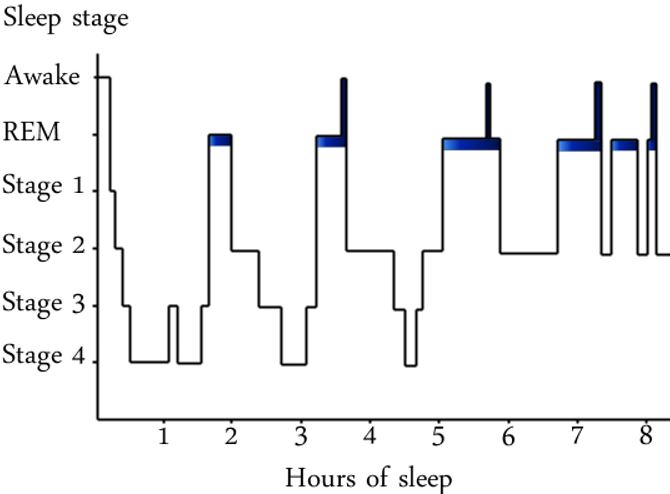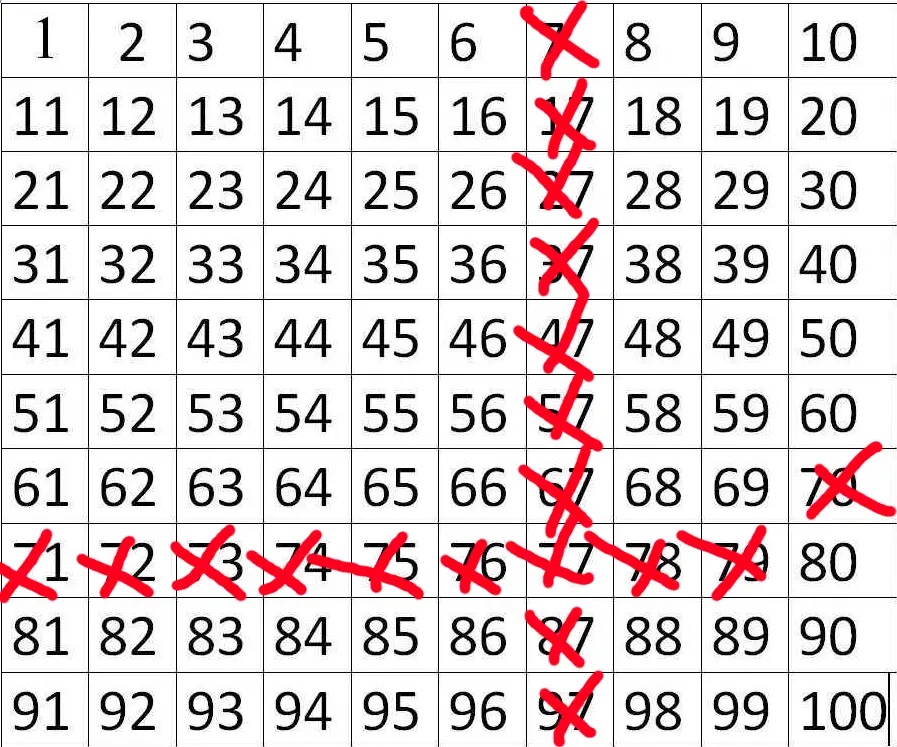WILD lucid dreaming or better known as Wake Induced Lucid Dreaming (WILD) is by far the most difficult way to lucid dream. However, when you do it correctly you will be able to use this technique over and over again.
WILD lucid dreaming
Wake Induced Lucid Dreaming is a lucid dreaming technique where you try to become lucid from the waking state. The WILD lucid dreaming process is described as difficult but is also known as the best way to become lucid because you can decide where you start your lucid dream and are described as vivid lucid dreams.
WILD can be performed in multiple ways and those are called anchors. There are a couple popular WILD anchors, those are:
- Finger Induced Lucid Dreaming (FILD).
- Visually Induced Lucid Dreaming (VILD).
- Senses Induced Lucid Dreaming (SSILD).
- Counting.
- Breathing.
Some WILD anchors work so well that they get their own technique, and I have covered them all.
How to perform WILD?
WILD can be performed in multiple ways as described above, but I first going to explain the basics to start with those techniques and an explanation on the anchors.
The first thing to do before you start with lucid dreaming is to have dream recall. Dream recall is super important to succeed with lucid dreaming and that is why I recommend you to have a dream journal. A dream journal is a journal where you write down your dreams. This can be on a mobile phone app or in an actual notebook.
When you think you got the recall to proceed, you can decide to learn WILD, but for beginners I recommend you to start with Mneomic Induced of Lucid Dreams (MILD) and use WILD as an extra technique that you do on the side.
The first step
With WILD you need to become lucid from the awake state, this does not mean that you should do it before you go to sleep. The best moment to do WILD is in a Wake Back To Bed (WBTB). A WBTB is an awakening during the night to increase the chance to become lucid or to perform WILD. The reason why WBTB works is that you can be in REM sleep. REM sleep is the holy grail with lucid dreaming because you can become lucid a lot easier.

As you can see REM is every 90 minutes of sleep, so try to wake up around this time. This can be done with an alarm or you could use an intention to wake up at a certain time.
The moment you wake up you need to stay awake for at least a couple of minutes. You can do whatever you want in these minutes, but remember that how faster you can “fall asleep” the better the technique can work, but the reason you need to stay awake for a couple minutes is to give you some more focus during the WILD lucid dreaming progress.
Now it is time to perform the lucid dreaming technique.
The second step
Before you are starting with one of the WILD anchors you need to become relaxed. The best way to do this is by laying in your sleeping position and focus on your breathing for a couple of minutes. Do not fall asleep because then you failed your WILD attempt.
What anchor should I use?
Since you are now on the moment to perform a WILD anchor you need to decide what anchor you want to use. I will go over every WILD anchor and will give them my own opinion on how good they perform on average and what you can expect from those techniques.
Finger Induced Lucid Dreaming (FILD)
The most popular beginner WILD anchor is known as FILD. This anchor focuses on your fingers. With this anchor, you need to use a certain pattern like playing the piano or pushing on a wall, that triggers your visualization, imagination, and your feeling in your fingers.
You can read the full description on the complete Finger Induced Lucid Dreaming guide.
I personally don’t like this WILD anchor because it has a curse. This curse is that people who use FILD only succeed the first time and never again.
Visually Induced Lucid Dreaming (VILD)
My favorite WILD lucid dreaming anchor is by far VILD. This anchor focuses on your visualization and imagination to become lucid. The biggest advantage of this anchor is that you can choose your location to start in the lucid dream since you are visualizing it you decide the dream.
You can read the anchor description on the complete Visually Induced Lucid Dreaming guide.
My personal experience with VILD is great, but I have heard that a lot of people struggle with technique and the reason could be that they cannot be focused on visualization well or are losing attention to it.
Senses Induced Lucid Dreaming (SSILD)
SSILD is not a real WILD anchor since it is a hybrid technique and can work as a Dream Induced Lucid Dreaming (DILD) technique as well. That is why this technique is great for beginners because your technique is automatically a backup.
You can read the full guide on the complete Senses Induced Lucid Dreaming guide.
I think this is by far the best WILD anchor to start with because it is automatically a backup if you failed to do it.
Counting
Counting is an amazing anchor to use because you can stay focused with a certain counting pattern. Since I have not made a full guide on counting I will explain the counting technique here.
Performing this anchor seems rather simple but can be difficult because you cannot just count from 1 to 1000 and believe that you will become lucid. You need a unique counting pattern and that requires enough focus to not fall asleep. I couldn’t crack the code myself but luckily a friend of mine who is now able to lucid dream in every dream came to the conclusion that you may need to have a reset button.

This is the method. You start counting down from 100 or 1000 or even 10000, where you don’t say a single number. This could be seven, this means you cannot say 7 within yourself because when you do you have to start over from the beginning. Do this until you reach zero and if you are not lucid you start over again with another number you are not allowed to say.
This method gave me some lucid dreams and it definitely works, and I recommend this one for beginners.
Breathing
Breathing could be considered meditation. Since your goal with breathing is to stay mindful and be able to stay focused on breathing. This is by far the most difficult one from this list and I only recommend people who meditate consistently to try this one out.
This WILD anchor does not need any more explanation since this is it.
You became lucid!
By following these steps you could be able to become lucid, but there are some misconceptions about WILD and that can hurt your WILD progress.
Are you able to move?
During Wake Induced Lucid Dreaming you can move, and I don’t mean you should move constantly but if you feel that you are not laying well in your sleeping position you are allowed to move and adjust a bit. You will hit a vibration state while performing WILD, this is completely normal and I recommend you to stop moving by then because when you hit this point you can fail WILD.
Can I swallow?
You are allowed to swallow, and the people online saying you can’t have experienced WILD before or became trapped in the lucid dreaming rabbit hole that has lucid dreaming myths.
Will I experience sleep paralysis?
During WILD you can experience sleep paralysis. Sleep paralysis is the state where you are awake but your body is unable to move. In this state you often experience hypnagogia. These are hallucinations while being awake. Sleep paralysis is not scary when you know what it is.
The best thing about sleep paralysis is that you are able to make it a lucid dream. You can read more about it in my sleep paralysis lucid dreaming article.
Is WILD better than DILD?
WILD is not better than DILD because DILD can be more consistent and is more beginner-friendly. However, WILD can become consistent and become the best technique out there if it is performed correctly.
You may also like DILD vs WILD.
Why do I fail?
WILD is hard to learn and hard to master. You need to be able to form the techniques in your own techniques to make it work well. Those WILD lucid dreaming anchors are not there to give you a clear road to success. These WILD anchors are made for you to find a way that may work for you.
How long will it take?
Learning lucid dreaming takes a lot of patience because it can take years before you find any great success. The average that it takes to become lucid as a complete beginner is between 3 weeks and 2 months with DILD and between 2 months and a year with WILD. These stats are if you are not doing anything else than WILD and a dream journal.
While you performing WILD during an attempt it should not take longer than 15 minutes before you are able to see if you failed or succeed in it.
Alternative of WILD?
If you like the idea of waking up during the night and perform a technique you could consider Dream-Exit Induced Lucid Dreaming (DEILD). This is the same as WILD but instead of staying awake for some time, you should try to become lucid instantly. This technique is also amazing to learn to extend your lucid dreams.
Final thoughts
Wake Induced Lucid Dreaming (WILD) is an amazing lucid dreaming technique, but it requires some time to become consistent in it. I would recommend having a backup technique to fall back on to secure the chance to become lucid.







